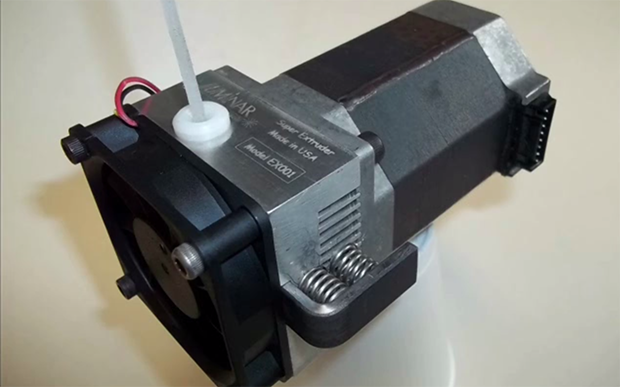
Even with ABS, PLA, Nylon, HIPS, and a bunch of Taulman filaments, the world of 3D printers is missing out on a great supply of spools of plastic filament. Plastic welding rod is available from just about every plastics supplier, and in more variety than even the most well-stocked filament web shop.
This Kickstarter hopes to put all those exotic plastic welding rods to good use. Instead of being designed to only use 1.75 and 3mm filaments, this guy will extrude welding rods up to 4.76mm in diameter. This opens the door for 3D printed objects made out of PDPF, PVC, Polypropylene, Polyethylene and other high molecular weight plastics.
Because these welding rods are much bigger than the usual plastic filament, this extruder also has the option for a very beefy NEMA 23 motor. It’s the perfect solution if you’re planning on building a homebrew ludicrous-sized printer, or you just to show off just how awesome you are.















Well, I hope whoever uses this to melt PVC has a really good ventilation system. That stuff is horrifyingly nasty.
http://architizer.com/blog/the-man-behind-the-worlds-largest-3d-printer/ can now be converted to a FDM 3d printer!
http://hackaday.com/2012/09/24/turning-a-shipping-container-into-a-3d-printer/
and http://www.thingiverse.com/thing:12459 can finally print things in days instead of a few weeks! ;)
I guess homes can now be FDM 3d printed — perhaps with various size 3d print heads for minor detailing && wiring?
Finally, a way to expand http://www.kickstarter.com/projects/re3d/gigabot-3d-printing-this-is-huge with increasing the print times beyond reason.
So why hasn’t someone just created a fat -> thin re-extruder or re-sold the output of such a device instead of re-fitting hundreds of 3d printers around the world with monstrous new extruders?
I don’t know. You could!
Doubt it. I have zero hands on experience with 3d printers. It was just a genuine question.
I smell a new kickstarter campaign! …it smells like hydrogen chloride fumes….
Because then you would always have to process two steps: extrude sticks to filament, spool it up, feed into printer. Can’t feed printer until you’ve extruded enough filament; more waiting. You start accumulating your own stockpile of both stick and filament, in various amounts of colors and materials; more clutter to store and juggle.
Neither approach is “right” or “wrong”; they just have different use cases.
Cool
Does this concept have to be used for making large, low-resolution prints? What if the extruder had a wide input but a typical, narrow output to preserve resolution. It would then just feed the fat welding rod in at a slower speed. Is there a reason that wouldn’t work?
Most likely too much back pressure, or unacceptably slow. 3D extrusion printing isn’t the fastest thing in the world anyway. Then there is the number of times you can melt the plastic before it breaks down and fails to print successfully. Finally, If you are going from unusable in fine resolution printers without reheating/reforming, why not just develop a functional filament extruder that accepts cheap industrial pellets?
Needs to be a size converter to extrude the welding rods into 3mm and 1.75mm filament.
Why?
Nothing like adding a huge mass to your print head to speed up your print times! >_>
you can use a tube to feed the rods as they are in to the extruder that way you dont have to extrude sticks to filament. were can you buy a Really Big Extruder? and what is the price?